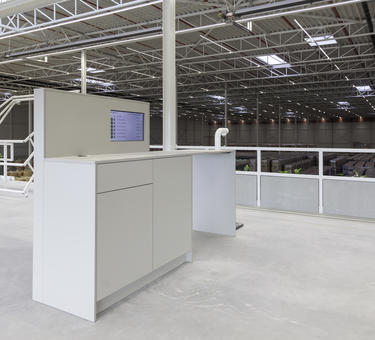Introducing the WELL Building Standard to a Prologis building in the Netherlands was first inspired by a 2017 holiday card from the M3E group, a consultancy in the field of sustainability. The card, which read “We wish you well” (a reference to the WELL Building Standard), prompted Prologis’ Arthur van Kooij to think about how buildings should further contribute to the well-being of the people who use them.
Lothar Wijnand, director of subsidies and quality marks at M3E explains the reasoning behind WELL: “Demand for healthy and comfortable buildings is increasing. Systems like BREEAM and the building code don’t cover user requirements adequately. They’re too firmly focused on things like energy savings. They’re assessment tools that take no account of people. For example, a building can achieve a high sustainability rating without providing comfort for the occupants.”
In April 2016, Wijnand visited the International WELL Building Institute (IWBI) in the United States. The WELL benchmark appealed to him immediately. “It’s very well thought through as a business case,” Wijnand says. “The idea is that health and well-being increase productivity. When you consider that businesses spend 90 percent of their money on personnel and 1 percent on energy, then the focus of WELL is totally logical.”
Wijnand continues, “Designing a warehouse in line with WELL requires a more human-centric approach. This included divergent alterations in architecture and technology, such as floor heating, operable windows, triple glass and additional features for extra daylight. We then looked at what further measures we could implement and worked them out together with design studio DoepelStrijkers.”
Redefined from Scratch
When it originated in 2014, the WELL Building Standard focused solely on office buildings. Timo van Vliet, the specialist for WELL at M3E, describes the evolution: “From 2015 onward, IWBI decided to approach the standard as a checklist on which individual projects could develop their own score cards. We did a similar exercise for Prologis,”
Van Vliet was appointed to adapt the U.S. standards to Europe and adjust the WELL guidelines to suit Dutch standards and regulations, which meant everything had to be redefined from scratch. “WELL sets out the aim, the outcome that needs to be achieved, and then it’s up to us to translate that and formulate our own definition,” says van Vliet.
Metrics
Now that Tilburg DC5 has been completed, the effect of the WELL features can be measured and monitored. Wijnand says, “The precise benefit of many things is still not clear upfront. For example, there are well-defined guidelines for air quality in offices, but there’s been a lack of research-based evidence on the air quality in warehouses at present. Questionnaires given to employees will give us more clarity regarding health and well-being and the effect of our building improvements. I’ll be satisfied if the spatial quality and interior climate are noticeably more pleasant from the start and if the occupants notice the difference a few years from now.”
